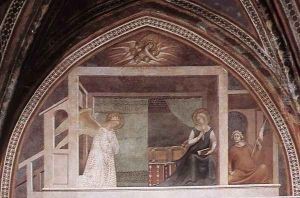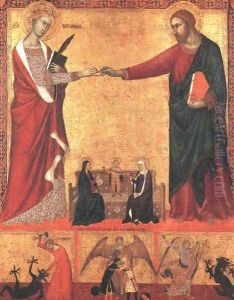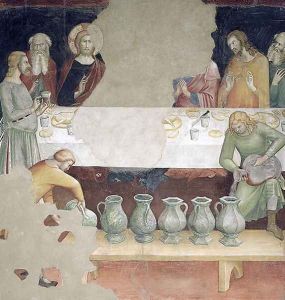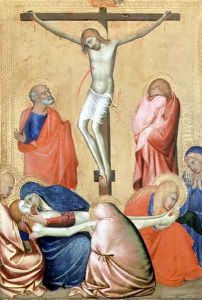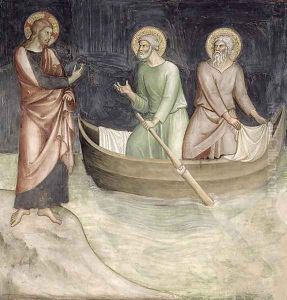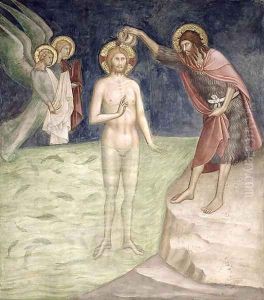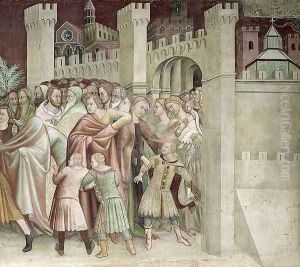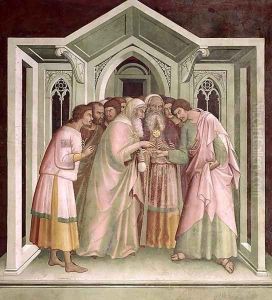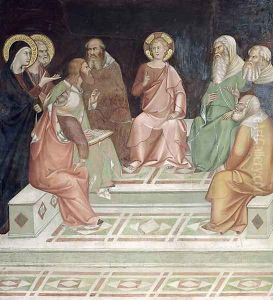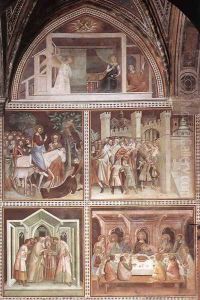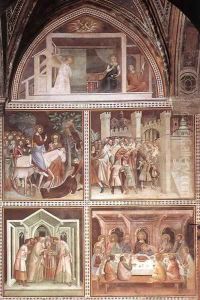Barna Da Siena Paintings
Barna da Siena, also known as Berna di Siena, was an Italian painter who is considered one of the most important artists of the Sienese school during the early Renaissance period. Little is known about his life, and much of what is attributed to him is based on stylistic analysis and the work of later art historians. There are no surviving documented records of Barna's life and work; hence, his exact birth and death dates are not known. However, it is generally believed that he was active as an artist from around 1330 until his death, which is thought to have occurred before 1350.
Barna da Siena's work is characterized by the use of vivid colors, intricate detail, and traditional Gothic elements. He was significantly influenced by the works of Simone Martini and the Lorenzetti brothers, who were prominent Sienese painters of the preceding generation. Barna's most renowned work is a series of frescoes in the Collegiata di San Gimignano, which depict scenes from the Old Testament. These frescoes are appreciated for their narrative quality and the artist's ability to convey complex emotions through the figures.
Unfortunately, his career was cut short, and according to a local tradition, he died tragically while working on the frescoes in the Collegiata di San Gimignano when he fell from the scaffolding. Due to the scarcity of information, some art historians question the attribution of these works to Barna da Siena, suggesting they may instead be by Lippo Memmi or another contemporary artist. Nonetheless, Barna da Siena remains a figure of interest for his contribution to the development of Sienese painting and his role in the transition from medieval to Renaissance art in Italy.
